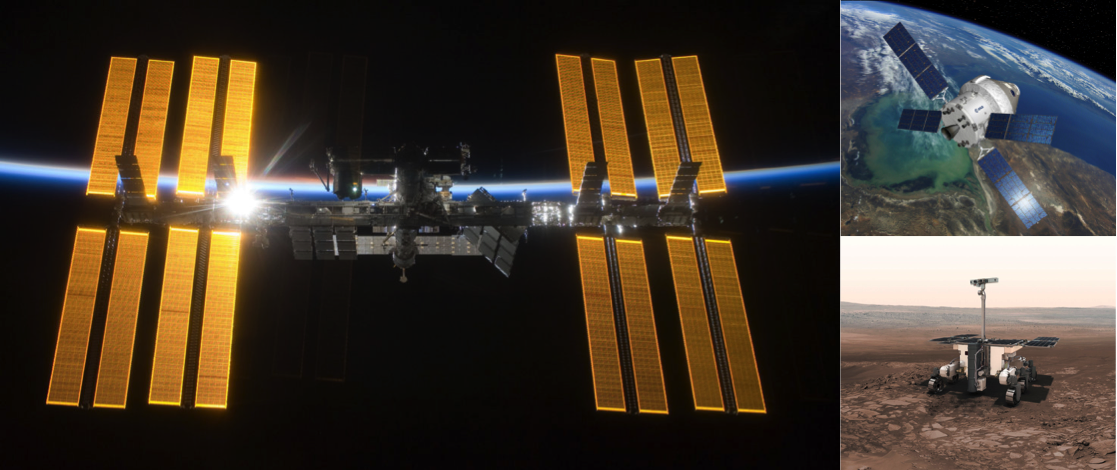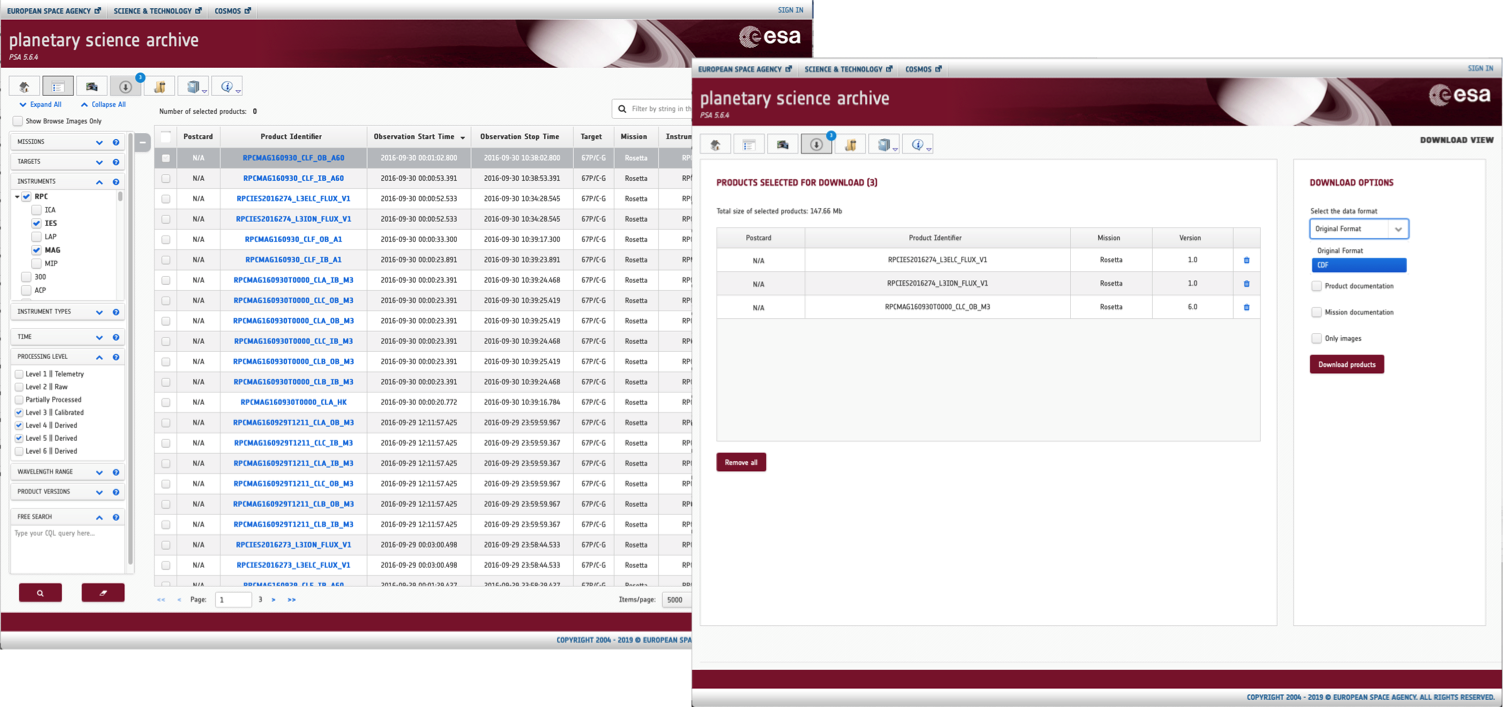The ESDC expands: Starting the development of the future HRE Data Archive
By B. Martínez, E. Istasse & B. López Martí

Since January 2019, the ESDC is in charge of developing the science data archives of ESA’s Human and Robotic Exploration (HRE) Directorate, in close collaboration with scientists from the HRE Science Data Centre (SDC).
To improve the end-to-end handling of the science datasets resulting from HRE research activities and missions, the role of the SDC is to consolidate the final experiment datasets, disseminate these towards the researchers, and potentially support any science data valorisation after the exclusivity period.
This ESDC and HRE SDC archive project is funded by the ESA Long-Term Data Heritage Programme as a joint activity between the Science and HRE Directorates, fostering a systematic, easier and long-term access to the HRE science datasets.
The HRE Directorate manages both projects implemented on traditional space research platforms –including ground-based analogues, drop towers, parabolic flights, sounding rockets and the International Space Station (ISS)– and on exploration missions (ExoMars, lunar activities).
The future HRE Data Archive will contain both historical datasets and data from ongoing experiments in many different research disciplines –e.g. human research, biology, physical sciences.
A systematic process will be put in place to enable an enriched initial data dissemination to PI teams, valorisation and seamless preservation of the datasets.
The Erasmus Experiment Archive (EEA) will remain the web portal for all public-releasable information of the HRE activities, while the HRE datasets will be hosted at ESAC, with cross-referencing between these two web portals.
Special care will be taken in the archiving process of sensitive data from human research projects, which requires extra security measures such as data encryption, and must be done in coordination with the HRE/ISS Security Control Board (SCB).
At the ESDC, we are excited about this new collaboration and look forward to the new challenges that lie before us.
Images: ESA

It is now possible to download datasets from the Rosetta Plasma Consortium instruments directly in CDF format, a data format commonly used by the Heliophysics community.
Full story

The first public release of the ISO Data Archive took place in December 1998. Twenty years later it is still a popular ESDC service.
Full story
PSA for heliophysicists: Key Rosetta RPC data available in CDF format
By A. Masson & B. López Martí

The Rosetta Plasma Consortium (RPC) was a set of five instruments onboard the Rosetta orbiter that explored the plasma environment around comet 67P.
The RPC consisted of five sensors: the Ion Composition Analyser, the Ion and Electron Sensor (IES), two Langmuir Probes, a Fluxgate Magnetometer (MAG) and a Mutual Impedance Probe.
The Planetary Science Archive (PSA) hosts all the datasets successfully collected by these sensors: from raw data to calibrated to advanced derived products.
All the RPC consortium datasets are stored in the PDS3 format commonly used by planetary scientists.
This format has clear advantages such as its flexibility and the possibility to store the data in ASCII format.
However, it is far from being the standard data format for space plasma physicists.
The Heliophysics scientific community is indeed much more used to manipulate such in-situ measurements in Common Data Format (CDF).
Contrary to PDS3, a CDF file can contain both data and metadata in a single file.
Data are stored as variables, with metadata stored as attributes. CDF enables to store of scalar and multidimensional data, particularly useful when storing 3D distribution functions collected by electrostatic analyser such as IES.
This format, which follows the guidelines defined by International Solar-Terrestrial Physics (ISTP) standard, is understood by many tools currently used by the space physics community
(such as QSAS, Autoplot, SPEDAS),
and it is easily loadable in other common data analysis tools such as IDL, Matlab and python.
Thanks to the Space dAta foRmat TrAnslator (SPARTA) software developed at ESA, it is now possible to download some RPC datasets from the PSA directly in CDF format, as shown in this video tutorial.
SPARTA converts the ingested data (in this case PDS3) into an internal format and writes it out in the selected output format (in this case CDF).
Available metadata are included in the CDF file in the ISTP-compliant CDF standard.
At the moment, the PSA provides daily CDF files derived from the best calibrated data collected by MAG and IES for the entire Rosetta mission.
Daily CDF files from the three other experiments will be made available when the final version of their calibrated files will be delivered to PSA.
It is highly recommended that, when available, the RPC data be downloaded in CDF format for use with any pre-existing tools or software libraries.
Image: ESA/ESDC
Celebrating twenty years of the ISO Data Archive
By B. López Martí, P. García Lario, J. Salgado, E. Verdugo & C. Arviset

Short before the holiday break, ESDC members and other ESAC staff gathered together to celebrate the twenty years of operations of the ISO Data Archive (IDA), whose first release took place in December 1998.
The Infrared Space Observatory (ISO) operated between November 1995 and May 1998, observing the sky at wavelengths between 2.5 and 240 microns with four different instruments in order to make chemical diagnoses of many different types of celestial objects, including planets, comets, stars, and distant galaxies.
The number of datasets in the ISO archive amounts to almost 150,000, taking into account all observational modes (including parallel and serendipity modes), which correspond to about 30,000 science observations and around 170 Gb. The data underwent advanced processing, including validation and accuracy analysis.
Many important discoveries were made thanks to ISO data, including among others, the telltale signature of water in star forming regions, in evolved stars, and in the atmospheres of Solar System planets, showing that water vapour is common in our Galaxy;
and the discovery of dust in the apparently empty space between galaxies.
It also participated in the follow-up campaign of comet Hale-Bopp as it passed near Earth between 1996 and 1997.
Data from this mission are still of interest for researchers, as proved by the several hundred active users still downloading data from the archive, a number that has remained quite stable in the last five years.
More than 180 scientific papers making use of ISO data have been published in the same period, another indicator of the importance for science of long-term data preservation.
Images: ESA & ESDC (C. Arviset & B. López Martí)





